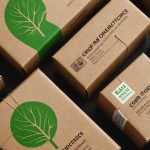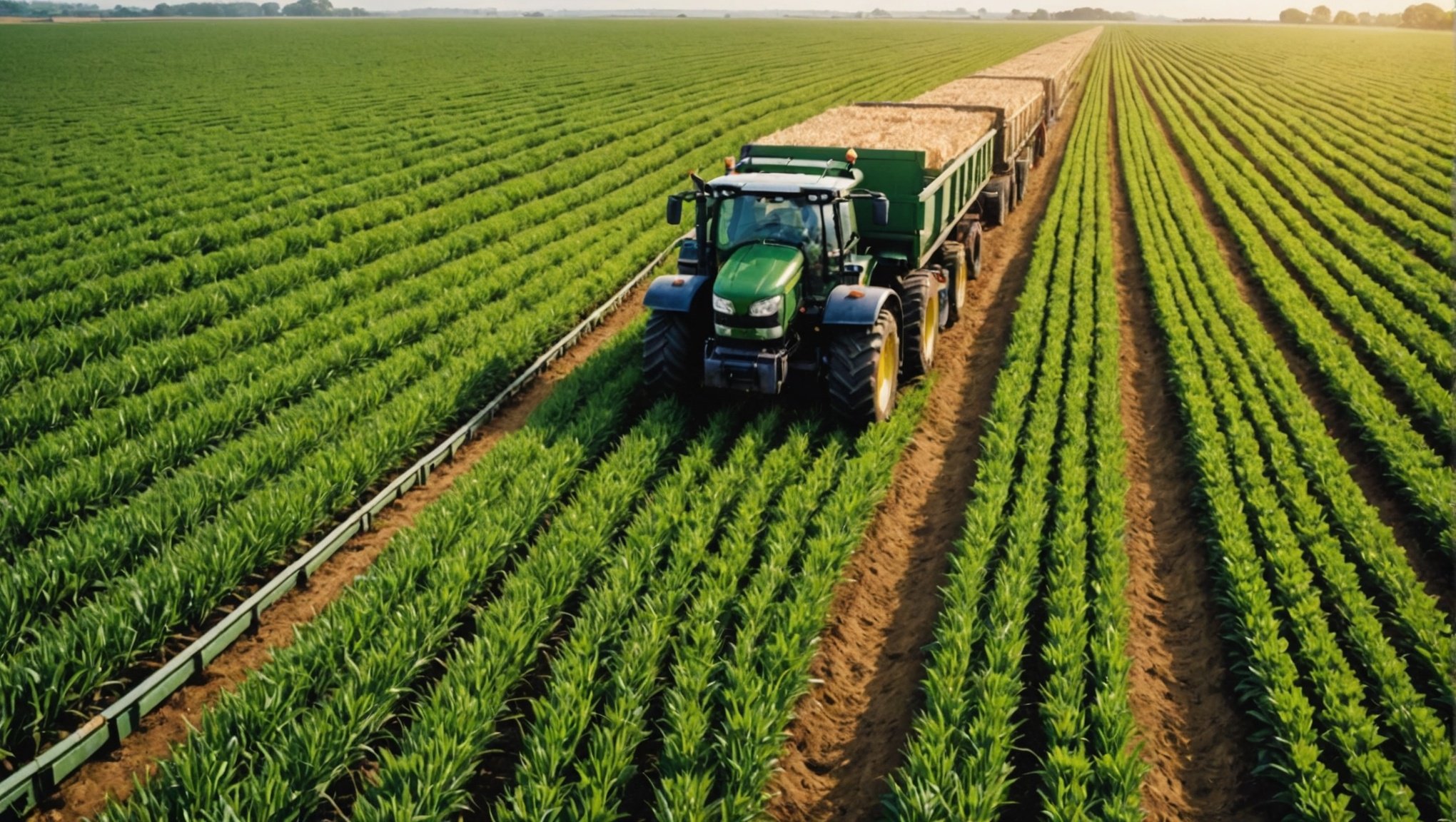Unlocking Supply Chain Transparency: Proven Strategies for UK Agricultural Companies to Enhance Traceability
In the increasingly complex and globalized food sector, the importance of supply chain transparency cannot be overstated. For UK agricultural companies, achieving transparency is crucial not only for maintaining consumer trust but also for ensuring the quality, safety, and sustainability of food products. Here, we delve into the proven strategies that can help these companies enhance traceability and build a more resilient and trustworthy food supply chain.
The Complexity of Food Supply Chains
The food supply chain is a intricate network involving numerous stakeholders, from farmers to processors, manufacturers, and retailers. This complexity poses significant barriers to transparency, including the involvement of multiple interest groups, globalization, lack of standardization, and proprietary information that cannot be easily shared[1].
This might interest you : Essential Strategies for UK Tech Startups to Navigate Intellectual Property Management
- Globalization and Lack of Standardization: With products sourced from various countries, each with its own regulations and standards, ensuring uniformity and transparency becomes a daunting task.
- Proprietary Information: Companies often protect their supply chain details as proprietary, making it difficult to achieve full transparency.
- Rapid Scaling and Regulatory Fragmentation: The rapid growth of the food industry and the fragmented regulatory landscape add to the complexity, making it harder to maintain consistent transparency.
The Risks of Supply Chain Opacity
The lack of transparency in supply chains poses far-reaching risks, including food safety issues, environmental degradation, labor exploitation, and animal welfare concerns. These risks can lead to brand reputation damage, legal repercussions, and significant financial losses.
- Food Safety Risks: Opacity in the supply chain can enable counterfeiters to introduce fake or compromised products, posing serious health risks to consumers[1].
- Environmental Impact: Without transparency, companies may inadvertently contribute to environmental degradation through unsustainable practices in their supply chains[2].
- Consumer Trust: Consumers increasingly demand transparency, and failing to provide it can erode trust and loyalty, impacting a company’s performance and profitability[1].
Implementing Digital Technologies for Transparency
Digital technologies, particularly blockchain, are revolutionizing supply chain transparency in the agricultural sector.
Also to discover : Harnessing safety and efficiency in hydrogen storage solutions
Blockchain Technology
Blockchain offers a secure, decentralized data management system that provides an unalterable and transparent ledger of the supply chain. Here are some key benefits:
- Enhanced Traceability: Blockchain enables real-time tracking and monitoring of products from farm to shelf, ensuring that each product’s history is accurately documented and accessible[5].
- Increased Transparency: The immutable ledger of blockchain fosters an environment of openness and accountability, building trust among farmers, suppliers, and consumers[5].
- Smart Contracts: Blockchain-based smart contracts can automate various administrative tasks, reducing the time and resources spent on manual record-keeping and transaction processing[5].
Internet of Things (IoT) Sensors
IoT sensors play a crucial role in enhancing pipeline visibility and control by providing real-time data on product movement and condition.
- Real-Time Monitoring: IoT sensors enable continuous monitoring of products, ensuring that any issues related to quality or safety can be quickly identified and addressed[1].
- Data Sharing: IoT data can be integrated into blockchain systems, enhancing the overall transparency and traceability of the supply chain.
Enhancing Collaboration and Communication
Effective collaboration and communication among stakeholders are essential for achieving supply chain transparency.
Establishing Industry-Wide Standards
- Data Sharing Standards: Establishing industry-wide standards for data sharing streamlines communication and transparency, ensuring that all stakeholders have access to the same information[1].
- Routine Audits: Regular audits help maintain high standards and ensure consistent compliance with transparency goals[1].
Training and Education
- Open Culture: Training and education can foster an open culture among suppliers and stakeholders, encouraging transparency and cooperation[1].
- Supplier Management: Rigorous selection and vetting of suppliers ensure alignment with transparency goals, which is critical as supplier issues are a leading cause of recalls[1].
Increasing Visibility and Transparency
End-to-end mapping of the logistics journey and regular reporting are key strategies for increasing visibility and transparency.
End-to-End Mapping
- Identifying Gaps: Mapping the entire logistics journey helps identify gaps and areas for improvement, ensuring that all phases of the supply chain are transparent and traceable[1].
- Regular Reporting: Regular reporting keeps stakeholders informed about supply chain activities, building consumer trust and confidence[1].
Public Disclosure
- Transparency Reports: Public disclosure of supply chain information can significantly build consumer trust and demonstrate a company’s commitment to transparency and sustainability[1].
Case Studies and Practical Insights
Several companies and cooperatives have successfully implemented these strategies to enhance transparency and traceability.
Blockchain in UK Agricultural Cooperatives
- Dairy Cooperative Example: A UK dairy cooperative implemented blockchain to improve traceability and transparency. This resulted in enhanced consumer confidence and streamlined operations[5].
- Cost Reduction: By automating administrative tasks and reducing overhead costs, the cooperative was able to allocate resources more effectively[5].
Nestlé’s Regenerative Agriculture Initiative
- Regenerative Practices: Nestlé has been making significant strides in implementing regenerative agriculture practices. By 2023, 15.2% of its key ingredients were sourced from farmers adopting regenerative practices, with a target to reach 50% by 2030[4].
- Consumer Trust: This transparency in sourcing and commitment to regenerative practices has helped Nestlé build trust with consumers and stakeholders[4].
Financial and Environmental Benefits
Investing in supply chain transparency and sustainability strategies has shown significant financial and environmental benefits.
Revenue Growth and Cost Reduction
- Revenue Growth: Companies that invest in sustainability strategies, including supply chain transparency, have reported substantial revenue growth. For instance, 83% of processors in the food and agriculture sector reported at least 2% revenue growth from sustainability efforts[2].
- Cost Reduction: These investments also lead to cost reductions. Nearly every respondent in a Deloitte survey reported cost reductions, with 74% realizing at least 2% cost reduction[2].
Environmental Impact
- Sustainable Sourcing: Sustainable and responsible supply chain sourcing ensures that products are produced or procured in a manner that is socially and environmentally responsible. This includes practices like regenerative agriculture, deforestation-free sourcing, and limited chemical use[2].
- Risk Management: Transparency in supply chains helps manage risks such as reputational risk, regulatory risk, and operational risk, which are critical for maintaining environmental integrity[2].
Metrics and Evaluation
Evaluating the effectiveness of transparency and sustainability strategies requires careful consideration of various metrics.
Key Metrics
- Soil Health: Metrics such as soil health, biodiversity, and carbon sequestration are essential for evaluating the impact of regenerative practices[4].
- Certification Schemes: Certification schemes like the Soil Carbon Initiative and Regenerative Organic Certified can aid in evaluation, but investors must remain cautious not to lean too heavily on them[4].
Contextual Understanding
- Broader Context: Metrics must be placed within a broader context to understand their impact on ecosystems. For example, the type of trees planted, the ecosystems affected, and how these trees are maintained over time are crucial factors[4].
Practical Advice for UK Agricultural Companies
Here are some practical steps UK agricultural companies can take to enhance supply chain transparency:
Implement Blockchain Technology
- Start Small: Begin by implementing blockchain in a specific segment of the supply chain and gradually scale up.
- Collaborate with Stakeholders: Work closely with farmers, suppliers, and other stakeholders to ensure seamless integration and data sharing.
Enhance Collaboration and Communication
- Establish Clear Standards: Develop and adhere to industry-wide standards for data sharing to ensure uniformity and transparency.
- Regular Audits and Training: Conduct regular audits and provide training to maintain high standards and foster an open culture among stakeholders.
Increase Visibility and Transparency
- End-to-End Mapping: Map the entire logistics journey to identify gaps and areas for improvement.
- Public Disclosure: Regularly report on supply chain activities and disclose information publicly to build consumer trust.
Achieving supply chain transparency is a multifaceted challenge, but with the right strategies, UK agricultural companies can significantly enhance traceability and build a more sustainable and trustworthy food system. By leveraging digital technologies like blockchain, enhancing collaboration and communication, and increasing visibility through end-to-end mapping and public disclosure, companies can mitigate risks, improve consumer trust, and realize financial and environmental benefits.
As Tensie Whelan, a leading expert in sustainable business, notes, “Transparency is not just a moral imperative; it is a business necessity. Companies that embrace transparency will be better positioned to manage risks, build trust, and drive long-term success”[2].
In the words of a UK dairy cooperative that implemented blockchain, “The use of blockchain has transformed our operations, enabling us to track our products with precision and build trust with our consumers. It’s a game-changer for the agricultural sector”[5].
By adopting these proven strategies, UK agricultural companies can unlock the future of food traceability, ensuring a safer, more sustainable, and more transparent food supply chain for all.











